CRO (conversion rate optimization) is a hot topic. And rightly so. Transforming visitors into buyers all starts with a single click. Any method that can increase your site’s conversion rate is worth its weight in digital gold.
In this article, however, I want to dive deep into a lesser-known but profoundly more crucial CRO. This CRO is essential to long-term profitable success and oddly enough, you want to minimize it as much as possible.
This CRO is Churn Rate Optimization.
Customer churn rate — also known as “customer attrition, customer turnover, or customer defection” — is the amount of customers or subscribers who stopped using your product or service within a particular period of time.
The vast majority of both marketing budgets and marketing blogs are devoted to attracting new customers, instead of retaining the ones you already have. Ironically, the simple truth is this: churn rate optimization — reducing the number of customers who abandon your product or service — is far more essential to your profitability and long-term success than conversion rate optimization.
Why?
Consider the facts:
- Acquiring a new customer costs 6-7 times more than retaining and selling to an existing one (Bain & Company).
- 72% of customers who had a memorable product purchase took action to communicate about it positively to others (Harris Interactive).
- The probability of selling to an existing customer is 60-70%, while the probability of selling to a new prospect is just 5-20% (Market Metrics).
- On average, loyal customers are worth up to 10 times more than their first purchase (White House Office of Consumer Affairs).
Obviously, the incentives to reduce customer churn are high. But so are the challenges. Lowering your customer churn rate means understanding what makes customers leave and then putting steps in place from the moment they become a customer to ensure their experience keeps them coming back.
To do that, here’s a simple five-step plan to discover your churn rate and stop your business from losing out.
1. Measuring
Naturally, before you fix your customer churn, you have to figure out what your churn rate is. Here’s a very simple formula for calculating customer churn rate:

While stating your customer churn as a percentage is the most commonly discussed method, it isn’t always the best for SaaS businesses. This formula automatically assumes that all customers are equal and worth the same.
With a freemium business model, you can see how this could be skewed, especially if you’re losing free customers but gaining paid ones, or the other way around.
For businesses that need a more detailed approach, customer churn can be stated in any of the following ways:
- Number of customers lost
- Percentage of customers lost
- Value of monthly recurring revenue (MRR) lost
- Percentage of MRR lost
The value these different numbers have to your business will depend on the type of products you sell. For example, if you sell subscription packages at different price ranges, the lost MRR figure will tell you more about your status than the bare number of customers lost.
No matter which formula you use, it is important to continuously monitor your churn rate for comparison and improvement. This is where an all-in-one business dashboard comes in handy.
Cyfe allows you to pull in data from various sources – both online and offline – and bring them together on one screen to get a clear picture of your business’ overall status. Part of this overall picture must include how your churn rate compares to your acquisition rate, i.e. the number of new customers you gain.
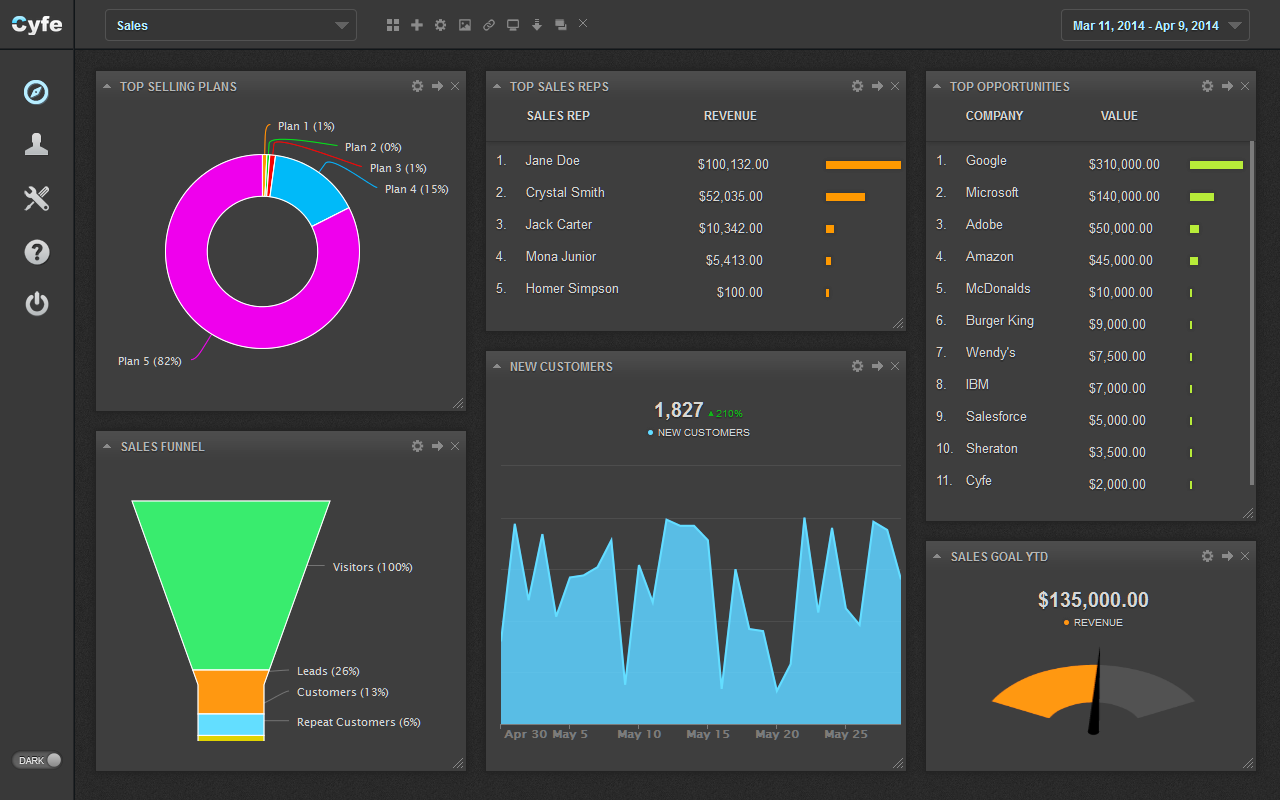
In addition to the big picture, Cyfe has three widgets specifically designed to monitor different types of customer attrition: downgrades, cancellations, and churn itself.

2. Understanding
To truly drill down into the mysterious world of customer behavior, you need some help.
When you’ve mapped out the sales cycle, it’s time to see what visitors are doing on your site. For B2B companies especially, the sales cycle can be complicated and oftentimes the website is not utilized to its full potential.
Companies like Leadfeeder provide B2B companies a Google Analytics based tool to see which company the visitors come from.
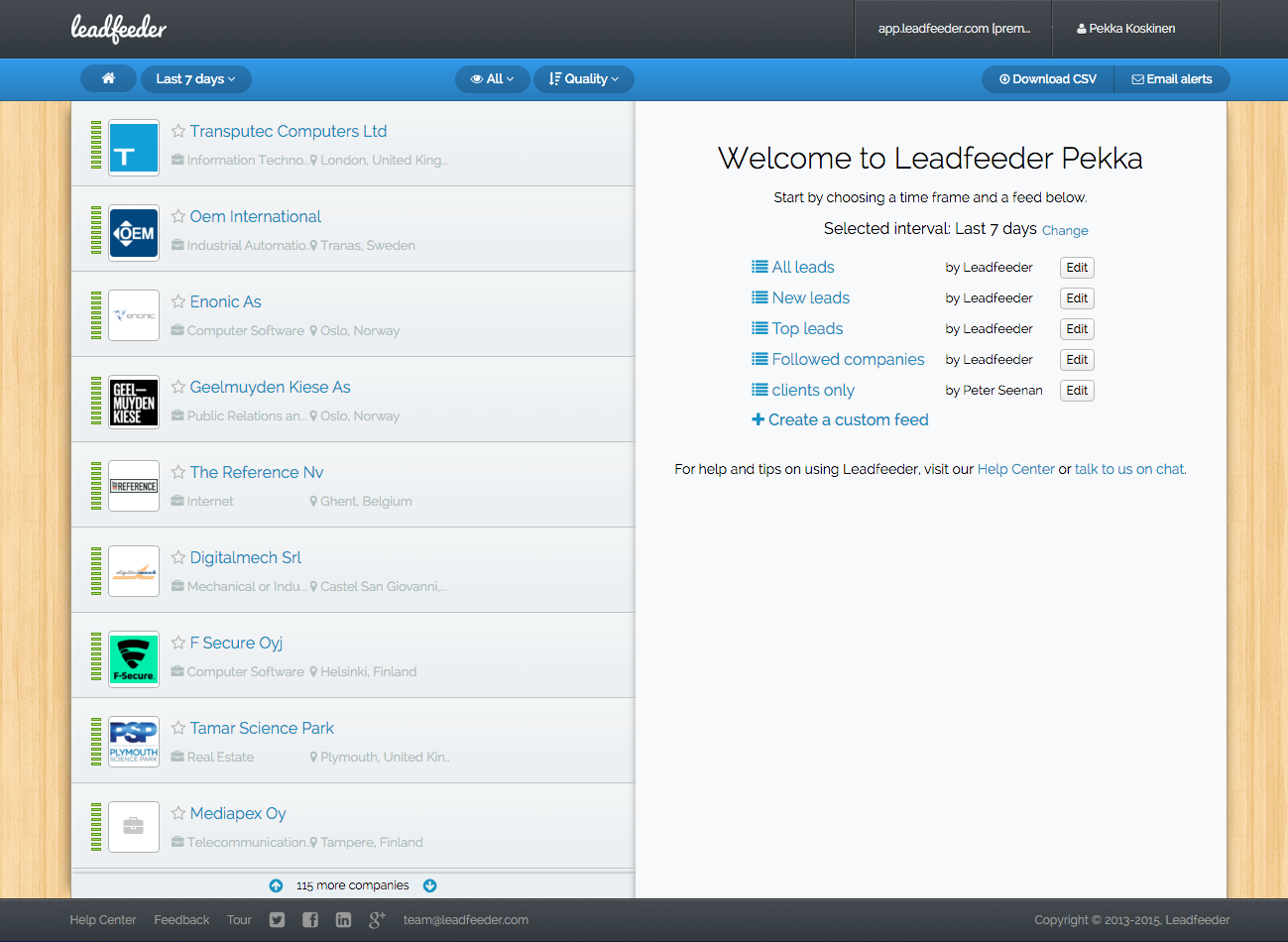
The platform shows a list of companies that visited your website and allow you to click on the company to see which pages were loaded and how they found your website. Once you identify a prospective lead, you simply email it to your sales team or upload it to the CRM.
When you understand the types of companies interested in your product, you are well-positioned to understand how to approach them. More importantly, you can tailor your product to cater to the right niche within the industry.
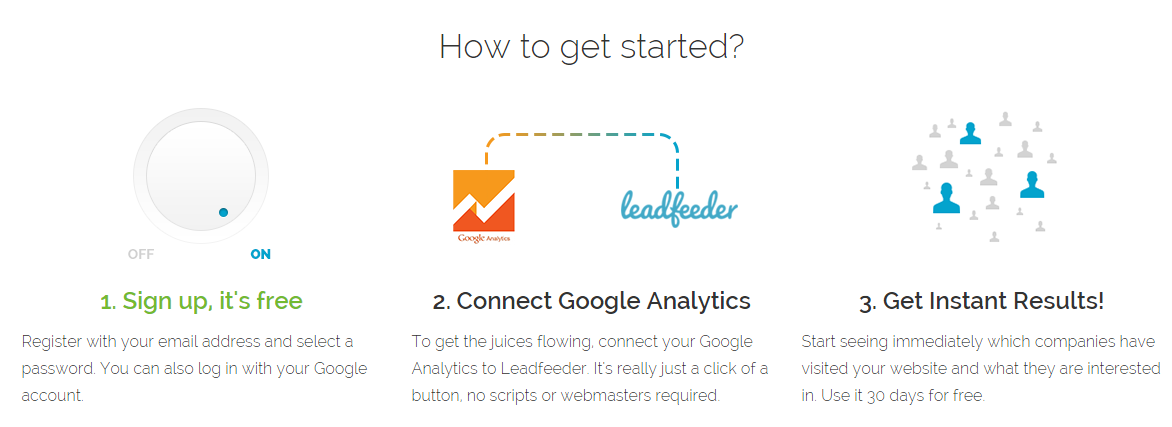
By narrowing down your focus you’ll automatically decrease your churn rate and discover the real and sustainable potential of your service.
3. Onboarding
Decreasing your churn rate starts the moment someone becomes a customer.
This means the onboarding phase is crucial, because once a customer has made a commitment by signing up, particularly if they are spending money, they see things a lot differently. Namely, they experience what is called post purchase dissonance: a universal phase during which they are constantly assessing their purchase to determine whether they made the right decision.
In other words, you have a limited window to hook customers into your product and experience them as part of their daily lives. So how do you achieve that?
By getting them to invest time and effort in your product’s key features and offering immediate and measureable results.
The best way to communicate to a customer immediately post-purchase is via email. The first email should be familiar: confirm their subscription/purchase and welcome them aboard. Some stop there, but you have the ability to do much more than that.
Instead, focus on building a robust onboarding process by creating a lifecycle email sequence. Here’s a brief overview you can follow:
(1) The Confirmation Email
Welcome your new customer in a memorable and personal way. Include the relevant details, but above all stand out. The classic example of this is CD Baby’s confirmation email, which started with the amazingly unique line: “Dear [Name,] Your CDs have been gently taken from our CD Baby shelves with sterilized contamination-free gloves and placed onto a satin pillow.”
(2) The How to … Best Feature Email
Follow up in the next few days by giving your customers a guided tour of your most beneficial feature. Keep it simple and just focus on one. Also, call attention to a customer success story of that single feature. Including a link to a case study is a phenomenal way to both promote your product and help them engage.
(3) The How to … Get Even More Email
Next, highlight to 2-3 additional features and (again) call attention to the value they create. As a “PS,” invite your customer to share their questions or successes with your product based on the best feature email you sent previously.
(4) The Time’s Almost Up Email
If you offer a free trial period, send this email 72 and 24 hours before “time’s up.”
(5) The Bonus Email
This takes two forms. First, if your customer’s free trial has ended, offer them an opt-in to extend service. Second, if they’ve already purchased your entry-level product, now is the time to ease them into the next offering. However, be sure your “upsell” builds on their previous success.
Unfortunately, lifecycle emails can be taxing to create and deploy, especially if you sell multiple products.
That’s why it’s vital to use an autoresponder like GetResponse that not only allows you to build and schedule drip campaigns but to insert “dynamic content” to personalize your emails. Dynamic elements can be done in one of two ways. First, variable substitution places dynamic fields in your email that can be customized based on your recipient’s personal information. This is the most common form of personalization.
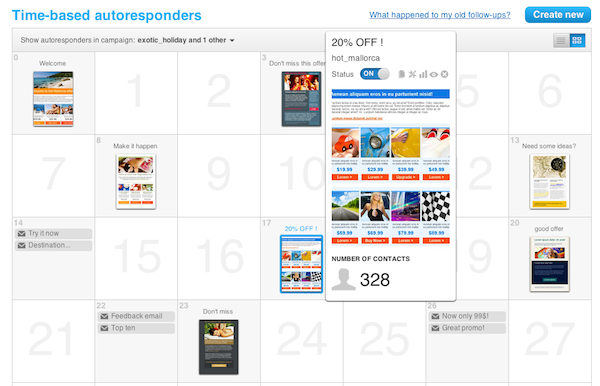
Second, content insertion is one step beyond. With content insertion you can actually “switch out sections of content—phrases, paragraphs, even images—by inserting different content in different places within the text of your message.”
Here’s an example of two emails, based on the same template, that utilize content insertion based on their customer’s interests (i.e., what offer they originally signed up for and what pages they’ve viewed in the past).
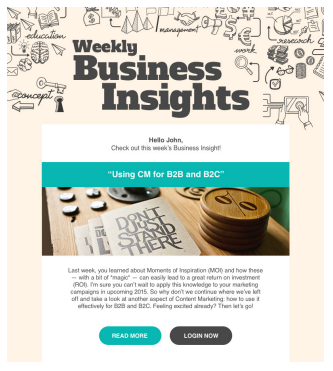
4. Teaching
Once a customer is “on board,” the next step is to keep them engaged. The best way to do this is through educating them even further, not just on using your tool, but on related disciplines to help them leverage your product for success.
Let’s take a look at one SaaS company that’s doing this excellently: Canva, an online-based design tool for non-professionals. Canva’s interface is fairly intuitive, but can be rather daunting to a non-designer, so the first step they took is to teach new subscribers how to navigate the software and use the tools provided.
But that wasn’t enough. Knowing how to use a tool doesn’t mean you know how to create great, eye-catching, cohesive designs, and if users weren’t feeling good about the finished product, they’d stop using the service.
So Canva created Design School, a series of in-product tutorials that teach users the elements of design and how to use them to create images for their blogs, businesses and personal use.
Another great email tool – designed especially for engaging your customers throughout their lifecycle – is Rejoiner. This email marketing automation platform specializing in recovering lost orders and reclaims profits through restoring customer’s carts.
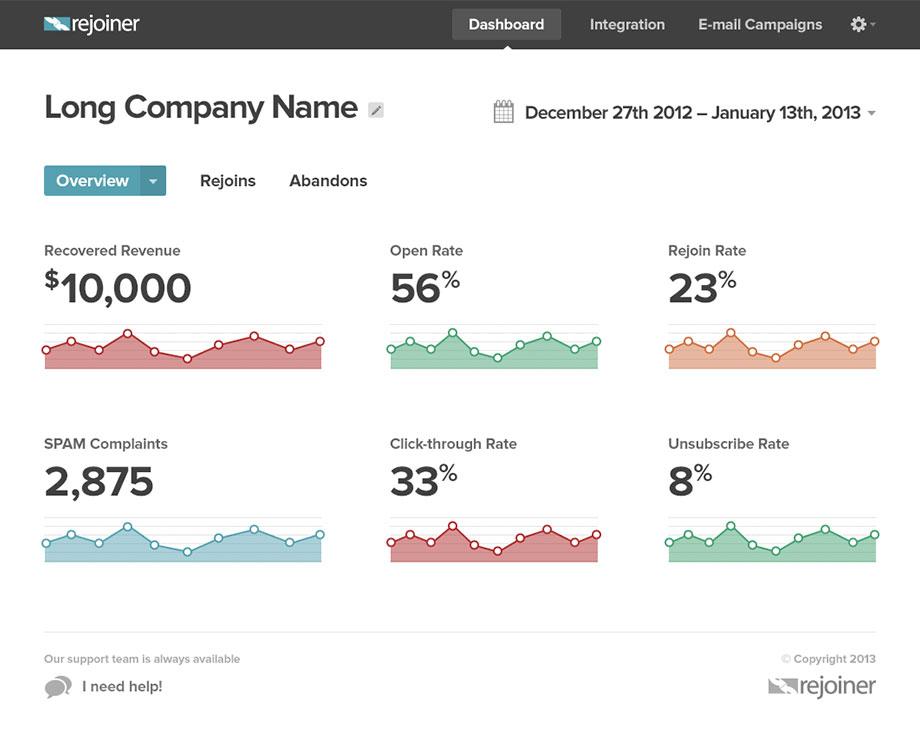
Rejoiner walks you through the entire lifecycle email process by breaking it down into four segments and then helping you build emails targeted at each one: New Customers, Existing Customers, Declining Customers, and Lapsed.

To adopt the techniques of Canva and Rejoiner for yourself:
- Be valuable. Don’t just teach customers how to use your product; give them the knowledge they need tied directly to observable outcomes (i.e., results).
- Be structured. Set goals for your customers and reward them – even via social media or on your own blog or forums.
- Be positive. Highlight success stories and use case studies to help your customers discover ways to get more from your product.
- Be timely. Map out and anticipate the lifecycle stages of your own customers and create content specifically for them.
5. Solving
Bad service, broken promises, and less-than-satisfactory products are all top reasons that lead to customer churn. Here, your job is to anticipate the most difficult challenges your customer will face and solve these problems proactively.
After you discover what behaviors lead to customer churn – most notably, inactivity – you can take steps to adjust your product to satisfy unmet needs, or reach out to these customers directly and help them to get better acquainted with your product and achieve success. Again, autoresponder emails built around in-app activity – or lack thereof – is the first stage in this churn-reducing process.
Once you’re armed with insight about exactly what the sticking points in your product or service are, you can also offer webinars and chat sessions specifically designed to address these customer needs. If you’re a marketer, you’re familiar with webinars as a lead generation tool. Here we’re talking about personalized webinars as a way to increase customer retention.
Data like this, direct from your customers, is invaluable in assessing your teaching as well as catapulting them into the next step …
6. Leveling
If your customers aren’t paying for your best subscription level or buying your best products, it means there is room for leveling them up, i.e. upselling.
Upselling is often seen as a negative term, particularly because salespeople in traditional organizations tend to push unnecessary upgrades and additional products to make a higher commission. However, when upselling is done well, both the customer and the company benefits. Upsells should be recommended to current customers only when it will help them bring them a new level of achievement. In other words, when they win, you win.
If a customer has maximized the features of their current plan, an upgrade is the only logical step. If they stay where they are, they won’t see any additional benefits. Therefore, when you notice they are approaching the limits of their current package, this is the perfect time to upsell.
So how do you level them up? By exposing them directly to the features available in higher packages and providing visual cues on what benefits they could be getting from taking the next step.
However, the most powerful tool for leveling up your existing customers is social proof, which means featuring reviews and recommendations that don’t come directly from you. Managing social proof can be tricky, especially because – by its very nature – you aren’t in control.
Enter Listrak, an omnichannel personalization and digital marketing automation platform. Listrak improves customer relationships through creating personalized experiences across multiple marketing touchpoints.
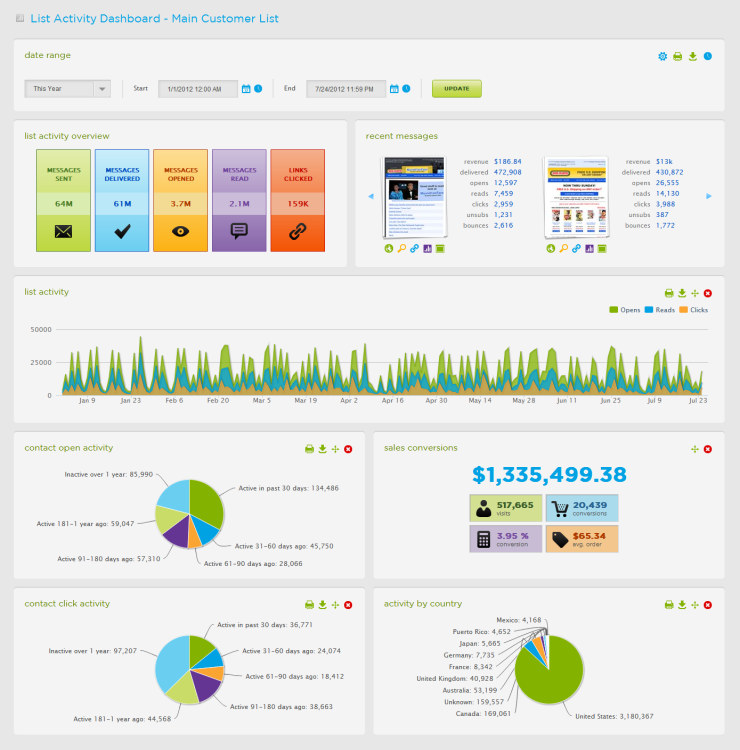
Listrak offer a suite of tools that create an effective integrated digital marketing campaign, which can maximize your ROI.
For instance, Listrak’s “Social Marketing” is a time saver and potential profit booster. This feature allows you to request and track social proof without any external tools or heavy lifting on your end. Even better, you can insert personalized social proof in the form of social media mentions as well as independent reviews directly into both your email campaigns and webpages.
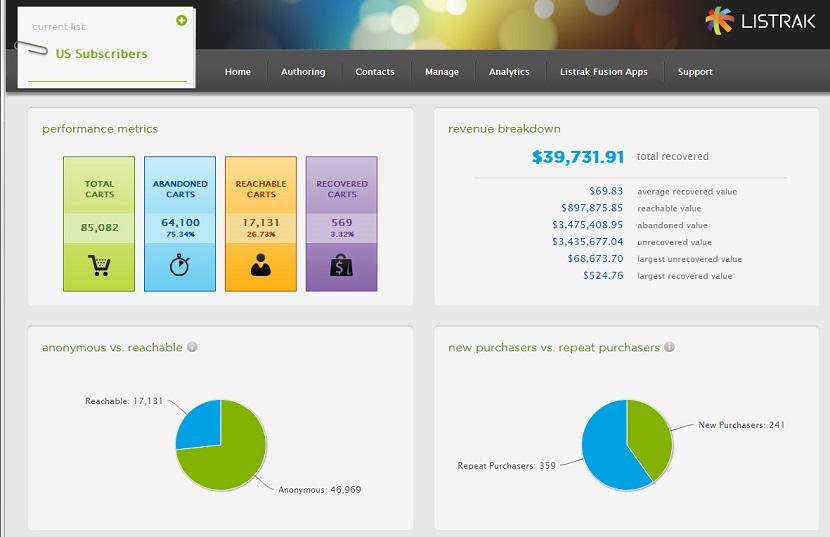
Reducing Your “CRO”
Unfortunately, we’re all prone to focus more on customer acquisition than customer retention.
But the cold, hard statistics all point in the same direction: customer retention is insanely more valuable.
To optimize your customer churn (CRO), your business must:
- Determine your churn rate and monitor it constantly
- Help new customers to become familiar with your product with a robust onboarding process
- Maximize the results they get by providing additional learning resources and demonstrating how others are using the tool
- Identify those who have maxed out the benefits of their current package and help them to advance to a new level
With all these processes in place, you are certain to see a reduction in your churn rate along with customers who love your product and promote it to others.
After all, your existing customers are your best hope of bringing new customers on board, so you can focus on continuously optimizing and creating a better experience.
About the Author: Nadav is a veteran online marketer and the Founder & CEO of InboundJunction, an Israel-based content marketing company. Nadav helps well-known brands in boosting their online visibility through PR, SEO and Social Media.
Comments (15)